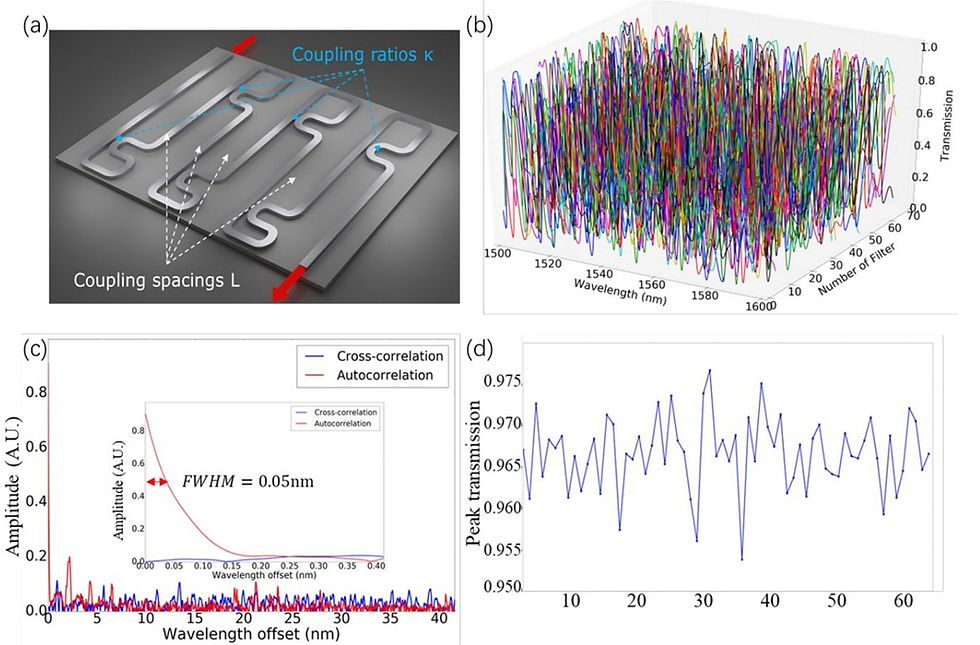Introduction
Spectrometers play a crucial role in various applications, ranging from wearable healthcare devices to portable food scanning equipment. However, conventional spectrometers are often bulky, expensive, and energy-intensive. This article introduces a breakthrough in spectroscopy – a high-performance integrated spectrometer fully integrated on a silicon photonics platform. Developed by researchers at Nanjing University of Aeronautics and Astronautics, this spectrometer offers remarkable performance, low cost, and a broad operation temperature range, making it a game-changer in the field.
Working Principle
The spectrometer operates on the principle of computational spectroscopy, which utilizes an array of broadband filters to sample the entire spectrum of the incident signal. By solving a system of linear equations, the spectrum can be accurately reconstructed from the responses of these filters. This approach offers several advantages, including a smaller footprint, reduced splitting loss, and higher dynamic range.
The fundamental principle of computational spectrometers can be expressed as:
minimize ||I₁ₓɴ - RΦ₁ₓᴍFᴍₓɴ||² + α||ΓΦ₁ₓᴍ||²
Here, I₁ₓ₦ is an array containing the responses of N detectors, Fₘₓ₦ is an array whose columns are the filters' spectral responses, and α is the regularization coefficient to smooth the results. Г is an auxiliary matrix to calculate the derivative of Φ₁ₓₘ, which represents the unknown spectrum.

Novel Broadband Filters
The key innovation in this spectrometer lies in the design of novel broadband filters called multi-point self-coupled waveguides (MPSCW). As shown in Figure 1(a), the MPSCW filter introduces multiple interference pathways at the output of a waveguide by incorporating multiple evanescent coupling points. By engineering the coupling strengths and spacings between these coupling points, the spectral response can be tailored to exhibit sharp randomness and distinct characteristics (Figure 1(b)).
The auto- and cross-correlation plots in Figure 1(c) confirm the high sampling resolution and low linear dependency of the filters' spectral responses. Additionally, the filters exhibit negligible insertion loss, with peak transmissions around 0.965 (Figure 1(d)).
Experimental Characterization

The spectrometer circuit, consisting of a 1x64 power splitter and 64 broadband MPSCW filters, was fabricated using e-beam lithography (Figure 2(a)). The static spectral responses of each channel, shown in Figure 2(b), exhibit distinct characteristics, as confirmed by the auto- and cross-correlations plotted in Figure 2(c). The peak transmissions of each filter, around -32 dBm (Figure 2(d)), indicate negligible losses when accounting for the losses from the power splitter and grating couplers.
To validate the spectrometer's performance, the researchers reconstructed various spectra by sending them through the chip and recording the responses from each channel. Figure 3(a) demonstrates the accurate reconstruction of a spectrum containing three broad peaks, while Figure 3(b) showcases the high resolution by resolving three closely standing narrow passbands with a border-to-border distance of around 0.1 nm.

Broad Operation Temperature Range
One of the most remarkable features of this spectrometer is its ability to operate within a broad temperature range without power-hungry temperature management systems. The researchers pre-recorded each filter's spectral responses at 10, 40, and 70 degrees Celsius and then reconstructed spectra at these temperatures using the corresponding sampling matrices. The results, plotted in Figures 3(c) and 3(d), confirm the spectrometer's robust performance across the tested temperature range.
Conclusion
The high-performance integrated spectrometer presented in this article represents a significant breakthrough in spectroscopy. With its compact footprint of 3 mm², a bandwidth of 100 nm, a spectral resolution of 0.1 nm, and the ability to operate within a broad temperature range without power consumption, this spectrometer offers unparalleled performance and cost-effectiveness. Its integration on a silicon photonics platform further enhances its potential for widespread adoption in various applications, including wearable healthcare devices and portable food scanning equipment.
Reference
[1] F. Bao, S. Pan, and A. Li, "High-performance integrated spectrometer with broad operation temperature range," Key Laboratory of Radar Imaging and Microwave Photonics, Ministry of Education, Nanjing University of Aeronautics and Astronautics, Nanjing, China, 2024.

Comments